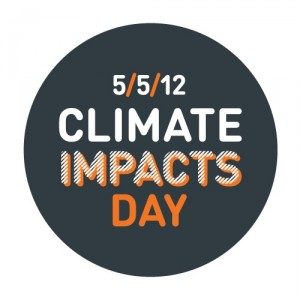
Why We Care About Climate Change
Karen warns at Best of Mother Earth that “we can look forward to extreme temperatures, super infectious diseases spread by insects that thrive on warmer temperatures, poor air quality and more. This is frightening!”
Sounds stupid, right? That’s what Beth at My Plastic Free Life thinks, especially after reviewing the film “The Age of Stupid.” “Set in the year 2055, after the effects of global climate change have basically wiped out most of humans and other animals on earth, a lone archivist records a message, illustrating it with a handful of the billions of stories he’s collected in a massive database he calls the Global Archive, before transmitting the entire collection into outer space as a cautionary tale to future civilizations,” reports Beth. “The big question: Why didn’t we save ourselves when we had the chance?”
Lisa of Retro Housewife Goes Green is wondering the same thing, especially since she lives in Oklahoma’s Tornado Alley, that part of the country that has seen a significant uptick in tornadoes and other extreme weather events over the last few years. “Oklahoma was a poster child for extreme weather last year, we had a record drought, broke the state record for most snow to fall in 24 hours, broke the record for coldest day, had the warmest July on record for the whole U.S., record windspeed, record wildfires, the largest earthquake reported in the state, and more.” Writing while facing another possible tornado just a few days ago, Lisa says, “This all hits home with me as I listen to the thunderstorm outside that has rocked the state and even dropped some damaging tornadoes. And I also think back to last year and all of the extreme weather, including the horrible drought that hurt the state so very much and caused me some sleepless nights worrying about the wildfires my dad, a volunteer firefighter, was out fighting.”
On the Big Green Purse blog, I highlight impacts that directly affect my kids – like worsening poison ivy. Most people don’t realize that poison ivy and its nasty cousins poison oak and sumac, are all getting much more dangerous because the plants are growing faster and bigger, and the toxic oil in their leaves is becoming more intense, thanks to hotter global temperatures. I offer some ways to avoid poison ivy and to deal with it once you get it, since in the short-term we’ll have to contend with it showing up more often in our yards and parks.
Lori at Groovy Green Livin’ sounds the alarm on an impact I care about almost as much as poison ivy: the availability of chocolate!
Chocolate is a heat-sensitive crop, Lori’s research shows. Even a small increase in temperature will affect the crops. A report Lori cites shows why there are big problems to come for the cacao tree:
…an expected temperature rise of more than two degrees Celsius by 2050 will render many of the region’s cocoa-producing areas too hot for the plants that bear the fruit from which chocolate is made, says a new study from the Colombia-based International Centre for Tropical Agriculture (CIAT).
“Warming temperatures and changes in the precipitation pattern will mean rapid declines in growing conditions over the coming decades. Not good news for the cacao tree and in turn bad news for chocolate suppliers and lovers on a global level.”
Abbie at Farmer’s Daughter reports on the impact climate change is having on another beloved food: maple syrup. “In my lifetime alone, the maple sugaring season has moved from March to February. Maple sap runs when it’s below freezing at night and warms up during the day. If we wait to tap trees until March we will have missed our chance. It is clear that spring has moved to earlier in the year and we have to adjust, tap early, or risk not being able to make maple syrup for a whole year…It’s a New England tradition, my family’s tradition, and yet I worry that some day we may lose it entirely.” Abbie is especially concerned about projections that indicate we could lose maple trees and maple syrup entirely by 2100.
Chocolate and maple sugar are two foods we may not be able to produce any more if climate change worsens. But what about the impact producing some foods has on making climate change worse? Katy of Non-Toxic Kids and Moms Clean Air Force identifies three significant ways factory farming contributes to global warming and suggests some very simple yet highly effective choices you have that can make a real difference.
Tiffany at Nature Moms loves traveling but worries that climate change could destroy some of our most beloved national parks before her family has a chance to visit them. “Climate change is melting the glaciers that make an appearance in some (national parks), which not only affects the beauty of these areas, it also means less water is making its way down to lower areas. Plants and animal life that rely on this water start to become endangered or extinct. Water sources that hikers need to survive start to dry up, making the area inhospitable. Scenic waterfalls dry up earlier and earlier and may eventually be gone for good. Can you even imagine Yosemite without its grand waterfalls???”
Do you have pets? Ronnie at Moms Clean Air Force does, and she thinks climate change is making them sick. “I’m worried that my pets (two dogs and one cat) are gravely suffering because our planet is getting too warm for them.” Ronnie reviews some of the available scientific research, but her own observations are most convincing. Her dogs are thirstier, hotter, and getting ticks much earlier than usual. She’s pretty sure her cat has contracted feline asthma as a result of the increased air pollution associated with climate change.
Stephanie at Good Girl Gone Green bemoans the impact climate change has on much bigger animals: polar bears. “When I think of polar bears, I picture a piece of ice with one stranded on top,” she writes. “Some might say it is a depressing way to think of them, but what is even more heartbreaking is that polar bears may not be around in 50 years. Extinct. Poof. Gone.”
What can we do?
Given the reluctance of some people to accept that climate change is actually happening, it’s important to be able to explain why it occurs. Dominique Browning’s Moms Clean Air Force interview with climate scientist Dr. Heidi Cullen provides a clear explanation and offers suggestions on how you can deal with so-called climate “deniers.”
Harriet of Climate Mama works with the Climate Reality Project to raise awareness. For Climate Impacts Day, she’s organized family and friends to visit the proposed site of a natural gas pipeline that would carry gas derived through hydraulic fracking through a state park. She and her colleagues are also holding a “teach in” on fracking to raise awareness between this controversial practice and links to earthquakes and water pollution as well as climate change.
Anna at Green Talk admits that in her household, wasting food is one way her family contributes to climate change. She’s not alone. According to the U.S. Environmental Protection Agency, “The amount of food waste generated in the US is huge. It is the third largest waste stream after paper and yard waste. In 2008, about 12.7 percent of the total municipal solid waste (MSW) generated in America was food scraps. Less than three percent of that 32 million tons was recovered and recycled. The rest – 31 million tons – was thrown away into landfills or incinerators.” Why does it matter? “The decomposition of food and other organic waste materials under anaerobic (without oxygen) conditions in landfills produces methane, a greenhouse gas (GHG) 21 times more potent than carbon dioxide. Landfills are the largest human-related source of methane in the United States, accounting for 34 percent of all methane emissions.” Her solution? Only buy what you intend to eat. And compost!!
For more ways to reduce food waste, check out the suggestions in this guest post from Aviva at The Scramble. Making a list and labeling left-overs are two simple steps that can lead to big savings and far fewer throw-aways.
Mary at In Women We Trust acknowledges that, in the face of overcoming a challenge as daunting as stopping climate change, it’s easy to feel like you’ve hit a “great green wall.” Mary is inspired by people in eleven nations in Africa who are working together to stop the Sahara Desert from creeping further south and turning all of Africa into an arid wasteland. “They aren’t doing it to lower Green House Gases,” acknowledges Mary. “They are doing it to survive, but at the same time, it is helping to lower GHG levels. Even the most die-hard denier can’t argue with the saving of a continent – especially when it’s producing such quickly appreciated results.”
At Big Green Purse, I’ve focused on the many ways consumers can use less energy as an important way to generate less carbon dioxide. They range from smart energy-saving driving tips to the top ten ways to save energy and money at home.
Never let it be said that, despite the seriousness of the challenges we face from climate change, we don’t keep our sense of humor! Deanna at The Crunchy Chicken offers a tongue-in-cheek run-down on the top five benefits of climate change. My favorite? #3: “Tropical weather without vacation prices.” Says Deanna wryly, thanks to climate change, we’ll have tropical weather all year long wherever we live – no need to tough out ten months of dreary winter or spend a fortune on a Caribbean vacation in January!”
Finally, thanks to Moms Clean Air Force for this cartoon and reminding us that the carbon emissions from our vehicles contribute significantly to climate change. In case you can’t commute in a toddler-mobile, here are some other ways you can burn less gas!
What impacts worry you? What solutions do you have? Please take a minute to let us know. Thanks!


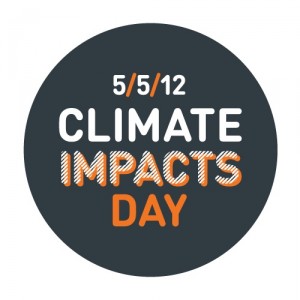

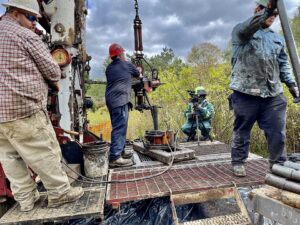

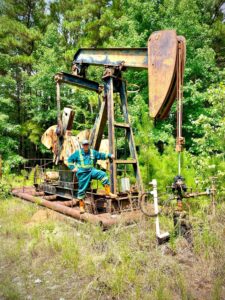


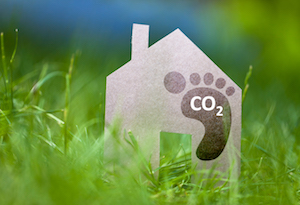








22 thoughts on “Climate Change Impacts on Our Health, Our Homes, Our Families and Our Future”
What a great conversation we all bring to this topic – thank you for hosting!!
Fabulous summation Diane, thanks for putting this together.
Thank you Diane for hosting such an important carnival. Our collective voices are strong,passionate and can make a big impact.
This is an amazing compilation of posts on an important topic. Thank you for organizing, Diane!
Such a lovely and diverse collection of stories and essays. Thanks Diane for hosting!
Thanks, Diane for highlighting such an important topic…and for including Moms Clean Air Force in the conversation. The “wait and see” approach to global warming is not going to work. Being proactive by advocating for cleaning up our air, water and land is the only way we’re going to see changes in the right direction.
Great Carnival, great ideas. We need to continue to “connect the dots” and keep climate change in the news and at the forefront, for our children and for us. Thanks for hosting Diane..So Important..
Great work everyone! Reading these posts really puts climate change in perspective. We all need to do our part and use our collective voices to create broader change! Go Green Moms!
Wow, what an amazing collection of posts. Thanks for putting this together Diane.
Fabulous collection of posts on the topic!
What impacts worry me? I worry about the effects of temperature changes on food supplies, droughts and floods. I also think it is horrible that those who are impacting the environment the least are getting the brunt of the horrors now! I am plugging away, trying to make people around me as aware as they can be, but it doesn’t seem like enough.
I had the pleasure of hearing Bill McKibben speak about a month ago. He is so knowledgeable, but I left there sort of depressed about the current situation. Here are my thoughts on that: http://thegreeningofwestford.blogspot.com/2012/03/bill-mckibben.html
We need more Dianes! My family is living in hell next to a indoor wood boiler. there are more than a 1/2 million IWB and OWBs in operation. This could be your house next Please check out my video and comment. Oh. write to Kristen Gillibrand and ask her why my family has to suffer! The video is taken from my childs playground! http://youtu.be/OO61TdrMMgE
Climate change, the most recent trouble we are facing. I think we need to find ways to think of some remedies.
Thank you for hosting this carnival, it is so great to read everyone’s different perspectives on how climate change is impacting our lives and our planet. I especially like looking at the section on what we can do about it!
Thanks for hosting! It’s very interesting to see what each of us thinks about, when thinking of the effects of climate change.
John: I watched your video. It does look horribly invasive. I hope you’ll be able to get some help from others in your community. Good luck. Diane
Kristina, Thanks so much for sharing the link to your blog. I hope you’ll join us in the next carnival!
Great for putting that together, thanks!
Thanks for putting that together!!!
Very lovely compilation.
To add to Diane’s Smart Energy-saving Driving Tips, I would like to mention that buying a gas sipper doesn’t have to be break the bank. I firmly believe that, generally, going green saves greenbacks (nor does it mean you must drive a feather-light plastic bath tub): http://www.cellomomcars.com/2012/02/how-to-buy-gas-sipper-for-less.html
Of course, reducing the carbon footprint of our cars is only a stop-gap measure: until we’ve managed, together, to build a good enough public transport network.
I am very worried about the effect of erratic weather on the planet’s food supply (for humans). Already the quality of fruit has been a little patchy these past 18 months or so.
Great point on the gas sipper car purchases! Thanks very much.
Wow. Some of this makes me so sad and upset. My husband and I just recently decided to build a green home. It won’t be completed until late next year. We are really excited about this decision. However, currently in our home we have been using a wood boiler to heat our house during the winter. It has been the best thing since all the oil and gas prices have started to rise. Thanks so much for sharing your post.
Comments are closed.